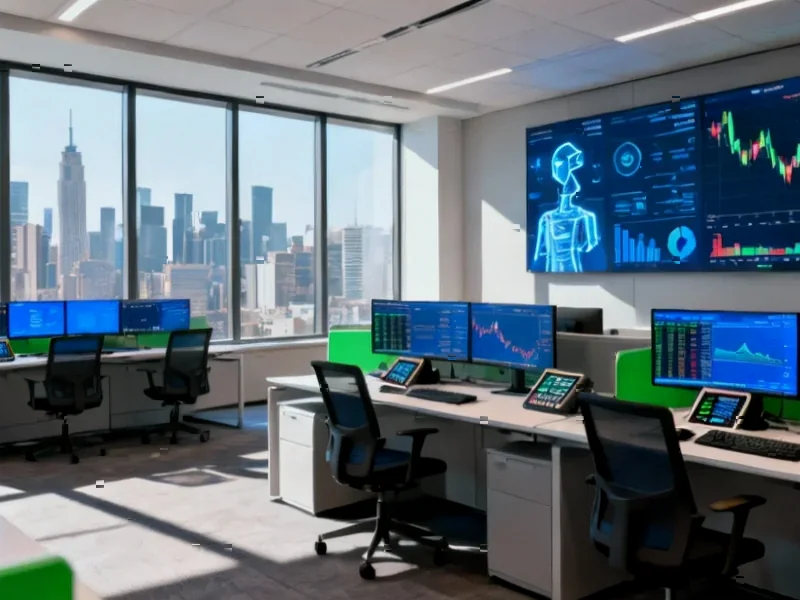According to CNBC, October defied historical market fears with the S&P 500 gaining 2.3% and the Nasdaq Composite climbing 4.7%, driven primarily by artificial intelligence stocks. Amazon surged 9.6% on strong cloud computing growth and AI demand, while Nvidia became the first company to reach a $5 trillion valuation during the month. CEO Jensen Huang described AI as creating a “virtuous cycle” of increasing usage driving more investment, which in turn improves AI capabilities. Big Tech companies reported massive increases in capital expenditure focused on AI infrastructure, suggesting sustained investment rather than temporary enthusiasm. This AI-driven market performance signals a deeper transformation underway.
The Infrastructure Investment Cycle
What we’re witnessing isn’t just another tech bubble—it’s the early stages of a massive infrastructure buildout comparable to the railroad or internet backbone expansions of previous eras. The capital expenditure announcements from major tech companies represent commitments to physical infrastructure that will take years to deploy and decades to depreciate. Unlike software investments that can be scaled back quickly, these are long-term bets on computing capacity that create structural advantages for early movers. Companies that secure the best GPU allocations, build the most efficient data centers, and develop the most scalable AI infrastructure will enjoy cost advantages that could persist for years, creating a durable competitive moat that goes beyond algorithmic superiority.
The Concentration Risk Nobody’s Discussing
While the immediate market gains are impressive, the underlying concentration in AI-related stocks creates systemic risks that echo previous market corrections. The technology sector’s outperformance masks how narrowly focused investor enthusiasm has become—when a handful of companies drive most of the market’s gains, any disruption to their AI narratives could trigger disproportionate declines. Historical precedents like the 1929 crash and 1987’s Black Monday remind us that concentrated market leadership often precedes volatility. The difference this time is that the concentration reflects genuine infrastructure investment rather than speculative frenzy, but the risk remains that expectations have outpaced near-term practical applications.
The Enterprise Adoption Reality Check
Behind the staggering market valuations lies a more complex reality about enterprise AI adoption. While cloud providers report strong demand, the transition from experimental AI projects to production-scale implementations is proving more challenging than many anticipated. Companies are discovering that integrating AI into core business processes requires substantial changes to data infrastructure, security protocols, and workforce skills. The capital expenditure surge reflects anticipation of future demand rather than current utilization rates, creating potential for temporary overcapacity if enterprise adoption timelines stretch longer than expected. This gap between infrastructure investment and practical application represents both a risk and an opportunity for companies that can bridge it effectively.
Beyond the Obvious Winners
The market narrative focuses on Nvidia and cloud providers, but the real transformation is happening across the entire technology stack. Semiconductor equipment manufacturers, cooling system providers, specialized construction firms building data centers, and even power generation companies are becoming critical beneficiaries of the AI boom. Meanwhile, companies focused on legacy technologies or those slow to adapt their product roadmaps face existential threats. The AI infrastructure buildout is creating a new ecosystem where competitive advantages will be determined by access to specialized components, energy efficiency, and integration capabilities rather than just algorithmic innovation.
The coming quarters will reveal whether this AI infrastructure investment represents visionary foresight or capital misallocation on a historic scale. What’s clear is that the technology landscape is being permanently reshaped around artificial intelligence priorities, with consequences that will extend far beyond stock performance into how businesses operate, compete, and create value for years to come.




